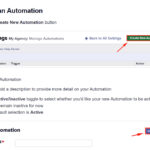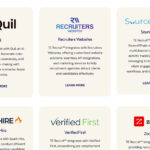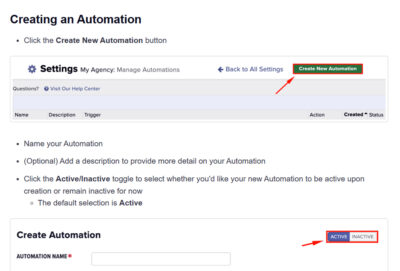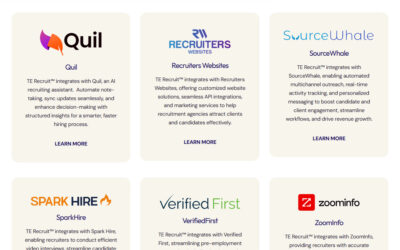The employment landscape has experienced dramatic shifts over recent years, with rapid changes reshaping how organizations attract, hire, and retain talent. A significant part of these changes is driven by evolving work preferences, advancements in technology, and an increasingly competitive job market characterized by talent shortages and high turnover rates.
Terms like “The Great Resignation” have emerged to describe the unprecedented movement of employees leaving their jobs in search of better opportunities, work-life balance, and organizational cultures that align with their personal values.
As companies navigate this complex environment, recruiters must adapt their strategies to meet the needs of both job seekers and employers. Flexibility, innovation, and a keen understanding of market dynamics are essential to succeed. In this article from Top Echelon Recruiting Software, we shall explore modern recruiting solutions and strategies that can help organizations thrive in today’s ever-changing job market.
1. Use Your Existing Candidate Database: Leveraging Your Hidden Talent Pool
One of the most underutilized resources in recruiting is a company’s existing candidate database. Over time, recruiters often accumulate vast pools of talent through past job postings, networking, and previous recruitment efforts. However, these databases frequently remain untapped, even though they hold valuable information about candidates who may now be a perfect fit for new opportunities.
Refresh and Reevaluate
Regularly refreshing and reevaluating your candidate database is critical. Candidates who were not suitable a year ago might now possess the experience or skills that align with your current needs. Market dynamics have shifted significantly, with remote work becoming mainstream, making previously overlooked candidates more viable options. For example, candidates with extensive remote work experience who may not have been considered before could now be ideal for virtual or hybrid roles.
Segment Candidates Based on Skills and Experience
To maximize the potential of your candidate database, segment candidates based on their skills, experience, and preferences. Use tags, filters, and notes to categorize candidates, making it easier to find them when relevant positions open up. For example, you might tag candidates with specific skills like project management, software development, or customer service, enabling quick identification when those roles need to be filled.
Reengage Past Candidates
Reengaging past candidates who were previously interviewed but not selected is another powerful strategy. Reach out with personalized messages that acknowledge their past interest and provide updates on new opportunities that match their profile. This approach not only fills roles faster but also reinforces your company’s commitment to maintaining relationships, which can enhance your employer brand.
2. Source Top Performing Candidates: Strategies for Identifying the Best Talent
Sourcing top-performing candidates remains a cornerstone of successful recruiting, but it has evolved significantly. Today’s recruiters must look beyond traditional resumes and consider a candidate’s ability to thrive in dynamic, often virtual work environments.
Prioritize Proven Remote Work Experience
Remote work requires a unique set of skills, including self-discipline, effective communication, and time management. Candidates who have demonstrated success in remote roles bring proven capabilities that can be a competitive advantage. By prioritizing these individuals, companies can mitigate the risks associated with hiring for remote positions and ensure a smoother onboarding and integration process.
Focus on Soft Skills
Soft skills such as adaptability, communication, and teamwork have always been valuable, but they are even more critical in today’s flexible work environment. These skills enable employees to collaborate effectively, solve problems creatively, and adjust to rapidly changing circumstances. Recruiters should assess candidates not just for their technical expertise but also for these interpersonal skills, which can often make the difference between a good hire and a great one.
Utilize Recruiting Networks
Recruiting networks, such as Top Echelon, offer access to a broader talent pool by connecting recruiters and sharing candidates across agencies. These networks are invaluable for finding top talent, especially in niche industries where specific skill sets are in high demand. By leveraging these resources, recruiters can broaden their search beyond their immediate reach and find qualified candidates faster.
3. Utilize Recruiting CRM: Building and Maintaining Candidate Relationships
In a candidate-driven market, building strong relationships is more important than ever. A recruiting Customer Relationship Management (CRM) system is an essential tool that helps recruiters nurture relationships with candidates, streamline communication, and manage the entire recruitment process from start to finish.
Automate Job Posting and Sourcing
A robust recruiting CRM enables recruiters to post job openings across multiple platforms with a single click, saving time and increasing exposure to potential candidates. By automating job postings, recruiters can focus on higher-value tasks, such as engaging with candidates and conducting interviews, rather than spending time on administrative functions.
Enhance Candidate Engagement
Recruiting CRMs are equipped with tools that enhance candidate engagement, including automated follow-ups, email campaigns, and personalized outreach. These features ensure that candidates remain engaged throughout the recruitment process, reducing drop-off rates and improving the overall candidate experience. By staying top of mind, recruiters can foster long-term relationships that pay off when future roles open up.
Track and Manage Candidate Data
A recruiting CRM serves as a centralized hub for tracking candidate interactions, storing resumes, and logging communication history. This level of organization allows recruiters to maintain a clear overview of where each candidate stands in the hiring process, ensuring that no opportunity is missed. Additionally, the ability to log notes and feedback from interviews provides valuable context that can inform future hiring decisions.
4. Streamline Recruitment with an ATS: Optimizing Candidate Tracking and Management
Applicant Tracking Systems (ATS) have become indispensable in modern recruiting, allowing organizations to efficiently manage candidate data, track the hiring process, and maintain compliance. An ATS not only helps recruiters stay organized but also enhances the candidate experience by providing timely updates and smooth communication.
Simplify Candidate Tracking
An ATS centralizes all candidate information, making it easy to track each applicant’s progress through the hiring process. From initial application to final decision, recruiters can monitor every step, ensuring that candidates are not overlooked or forgotten. The system’s search functionality allows recruiters to quickly locate candidates based on specific criteria, saving valuable time and effort.
Integrate with Other Tools
The best ATS platforms integrate seamlessly with other recruiting tools, such as job boards, email platforms, and background check services. This integration streamlines workflows, reduces manual data entry, and ensures that all relevant information is readily accessible. For example, integrating an ATS with a background check provider allows recruiters to initiate and receive results directly within the system, expediting the hiring process.
Enhance the Candidate Experience
An ATS enhances the candidate experience by automating communication at key stages of the hiring process. For example, automated confirmation emails upon application receipt, status updates during the review phase, and personalized rejection emails all contribute to a professional and respectful candidate journey. These touchpoints ensure that candidates feel informed and valued, even if they are not ultimately selected for the role.
5. Leverage Technology for Recruitment Marketing: Attracting Candidates with a Strong Employer Brand
Recruitment marketing is an essential strategy for attracting top talent in a competitive job market. By leveraging digital marketing techniques, companies can effectively promote their employer brand, highlight their unique culture, and engage potential candidates long before they apply.
Build a Compelling Employer Brand
A strong employer brand is a powerful tool that sets your company apart from competitors. Use your website, social media, and job postings to showcase what makes your organization a great place to work. Highlight employee testimonials, share stories of professional growth, and provide insights into your company’s values and mission. A compelling employer brand attracts candidates who resonate with your culture and are excited about the prospect of joining your team.
Utilize Social Media Recruiting
Social media platforms such as LinkedIn, Twitter, and Instagram are valuable channels for reaching potential candidates. Share job openings, company news, and engaging content that reflects your organization’s culture. Social media also allows for direct interaction with candidates, enabling recruiters to build relationships and respond to inquiries in real time.
Invest in Recruitment Advertising
Paid advertising on platforms like LinkedIn, Google, and Facebook can amplify your job postings and target them to specific audiences. Use targeted ads to reach candidates with the skills and experience you’re seeking, increasing the likelihood of attracting the right talent. Recruitment advertising campaigns can be tailored based on demographics, location, and interests, ensuring that your job openings reach the most relevant candidates.
6. Continuously Refine Your Recruiting Strategies: Staying Agile in a Changing Market
The job market is constantly evolving, and recruiting strategies that worked yesterday may not be as effective today. To stay competitive, recruiters must continuously refine their approaches, experiment with new techniques, and remain agile in the face of change.
Gather Feedback from Candidates
Collecting feedback from candidates about their experience with your recruitment process can provide valuable insights into what’s working and what needs improvement. Use surveys or follow-up emails to gather input on the application process, interview experience, and communication quality. By addressing areas of concern, you can enhance the candidate experience and strengthen your overall recruiting efforts.
Stay Informed About Industry Trends
Recruiters should stay informed about the latest industry trends, technological advancements, and market shifts. Attend webinars, participate in professional associations, and engage with industry thought leaders to keep your skills and knowledge up to date. Being proactive about learning enables you to anticipate changes and adapt your strategies accordingly.
Embrace Innovation
Embracing innovation is key to remaining competitive in today’s recruiting landscape. From artificial intelligence (AI) that enhances candidate sourcing to virtual reality (VR) for immersive job previews, new technologies offer exciting opportunities to elevate your recruiting process. Experiment with these tools and evaluate their impact on your efficiency and candidate satisfaction.
The modern recruiting landscape is defined by rapid change, fierce competition for top talent, and evolving candidate expectations. By leveraging your existing candidate database, sourcing top performers, utilizing recruiting CRMs and ATS platforms, investing in recruitment marketing, and continuously refining your strategies, you can successfully navigate these challenges and build a strong, dynamic workforce.
Recruiting today is not just about filling positions; it’s about creating meaningful connections, showcasing your company’s values, and delivering an exceptional candidate experience. As the market continues to evolve, the most successful organizations will be those that adapt quickly, embrace new technologies, and remain committed to engaging with talent in innovative and impactful ways.








